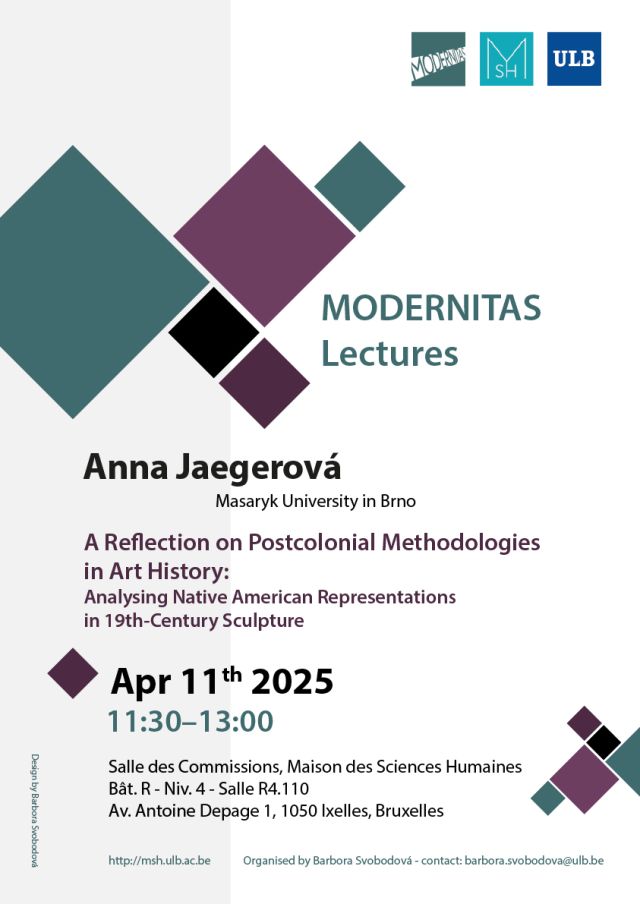Lecture "A Reflection on Postcolonial Methodologies in Art History: Analysing Native American Representations in 19th-Century Sculpture"
11/04/2025
By Anna Jaegerová, Department of Art History at Masaryk University in Brno
In another lecture of the MODERNITAS Lecture Series, this time co-organised with AmericaS Research Centre, Anna Jaegerová focuses on sculptures of Native Americans created by white American artists for the 1893 World’s Columbian Exposition. Through a critical reflection on postcolonial methodologies, she explores how art-historical tools can offer new insights into cultural representations and the formation of national identities.
In recent decades, many art historians have adopted postcolonial perspectives to analyse representations of minorities in colonial imagery, often examining depictions across various media to unveil entrenched Western stereotypes. Focusing on Indigenous populations of the US, this approach has led to repetitive interpretations and a certain stagnation in the area of research. Is the application of postcolonial methodology indispensable, or has its relevance diminished? What should compelling postcolonial art history entail?
This paper outlines my exploration of an effective method for analysing sculptural representations of Native Americans created by White American sculptors in the late nineteenth century, particularly those presented at the World’s Columbian Exposition in 1893. By employing targeted art-historical research methods—examining the conditions of the specific artistic medium and its broader transnational context—I seek a richer understanding of how visual constructions of race and difference were shaped by artistic practice. While postcolonialism is valuable for uncovering ideological constructs, its application in art history should be based on the specificities of the research material. Employing methods tailored to art history is essential not only for a comprehensive understanding of the artworks in question but also for addressing the complexities of how such images contribute to the formation of national and racial identities.
Anna Jaegerová is a doctoral candidate and tutor at the Department of Art History at Masaryk University, where her research focuses on 19th- and 20th-century art, with an emphasis on sculptural production. Because of her Czech-American origin, she gravitates towards topics related to the formation of national identities and the dynamics of cultural exchange, particularly between the United States and Europe. This perspective informed her bachelor thesis, which examined the career of Moravian-born sculptor Albín Polášek, who achieved success in Chicago in the early 20th century. Her master's thesis explored fin-de-siècle depictions of Native Americans in Euro-American sculpture, while her current dissertation project investigates figural art in postwar Czechoslovakia and the United States. In addition to her academic work, she has taught modern art at Mendel University in Brno and works as a translator, primarily for the National Gallery in Prague.
Friday 11th of april 2025, from 11.30 am to 1 pm
Salle des Commissions de la MSH
Bât. R - Niv. 4 - Salle R4.110
Av. Antoine Depage 1,
1050 Ixelles, Bruxelles
Free entrance

